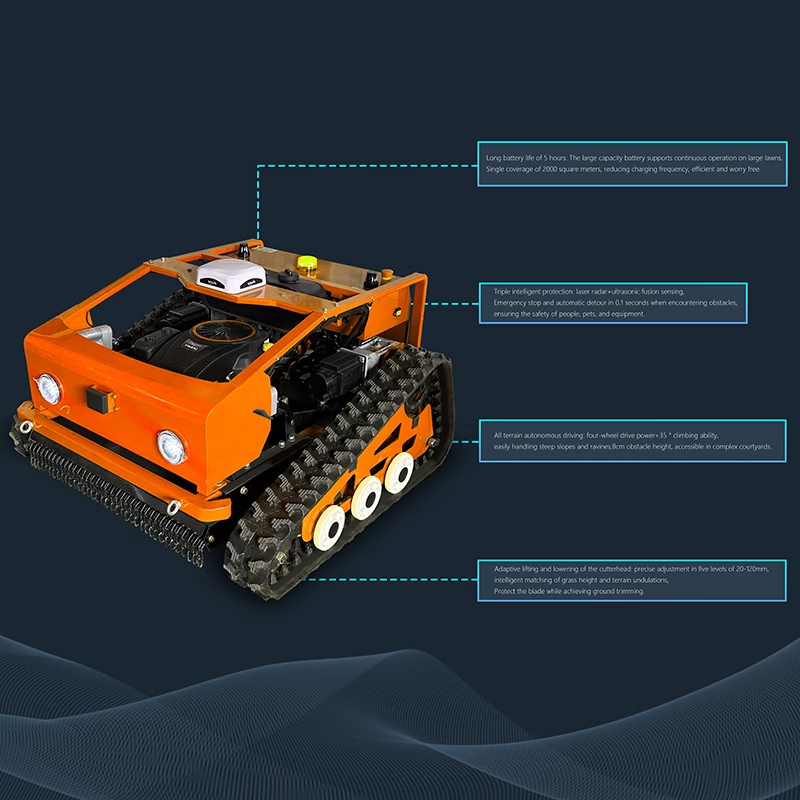Heavy-Duty 500kg Payload Tracked Robot Chassis: Powering Industrial Automation and Beyond
The demand for heavy-duty tracked robot chassis with 500kg payload capacity is rapidly growing across industries like construction, mining, and logistics. These robust platforms combine all-terrain mobility, high torque motors, and modular design to tackle extreme environments while ensuring operational efficiency. Core Features Driving Adoption Unmatched Load Capacity Engineered for heavy-load applications, the chassis integrates
Educational Mini Robot Chassis – Advanced Mobile Learning Platform
Designed for robotics education and STEM learning, this compact robot chassis combines versatility, ease of use, and robust performance to empower students and hobbyists in exploring motion control, programming, and sensor integration. Built with modularity in mind, it supports hands-on experimentation while maintaining cost-effectiveness. Key Features All-Wheel Drive System: Equipped with four independently controlled 45°
Unlocking Efficiency and Safety: The Future of Automated Guided Vehicles (AGVs)
Unlocking Efficiency and Safety: The Future of Automated Guided Vehicles (AGVs) In today’s fast-paced industrial landscape, automation is no longer a luxury—it’s a necessity. At the forefront of this revolution are Automated Guided Vehicles (AGVs), versatile robots designed to navigate dynamic environments with precision. As we step into 2025, AGVs are redefining industries from logistics
How much does AGV cost compared to AMR?
The cost comparison between AGVs (Automated Guided Vehicles) and AMRs (Autonomous Mobile Robots) depends on several factors, including technology, functionality, and application requirements. Here’s a detailed breakdown based on industry data and market trends: 1. Average Cost Range AGVs Base Price: $15,000 to $50,000 per unit (for standard models). Factors Influencing Cost: Payload capacity
Can AGVs and AMRs be used together in a warehouse or manufacturing plant?
Yes, AGVs (Automated Guided Vehicles) and AMRs (Autonomous Mobile Robots) can be used together in a warehouse or manufacturing plant to create a hybrid automation system. This integration combines the reliability of AGVs for structured tasks with the flexibility of AMRs for dynamic environments. Below is a detailed breakdown of how they can coexist and
What distinguishes AGVs from AMRs?
Here is a detailed comparison of AGVs (Automated Guided Vehicles) and AMRs (Autonomous Mobile Robots), highlighting their key differences: 1. Navigation Technology AGVs Fixed Infrastructure: Require pre-installed guidance systems (e.g., magnetic strips, wires, RFID tags, or QR codes) to follow predefined paths. Limited Adaptability: Cannot dynamically adjust routes if obstacles or layout changes occur. AMRs
Types of AGVs (Automated Guided Vehicles)
Types of AGVs (Automated Guided Vehicles) AGVs come in various types, categorized by functionality, load-handling methods, navigation technologies, and application scenarios. Below is a breakdown of their core classifications and characteristics: 1. Classification by Load-Handling Method Forklift AGV Function: Equipped with forks to automatically pick up and transport palletized goods. Characteristics: Suitable for shelf stacking
Tracked Chassis Seeding Robot Multifunctional Agricultural Machinery Automatic Seeder
Automatic sowing, weeding and pesticide spraying rotary tiller: an innovative choice for multifunctional agricultural machinery. In the process of agricultural modernization, an agricultural machinery that can integrate multiple functions is undoubtedly a powerful assistant for farmers. This automatic sowing, weeding and pesticide spraying rotary tiller is just such a multifunctional agricultural artifact. It has a
2000kg Payload Capacity Industrial Robot Chassis Ros Apollo Secondary Development
Industrial automation is rapidly evolving, and the demand for robust robotic solutions capable of handling extreme workloads has never been higher. A 2000kg payload capacity industrial robot chassis stands at the forefront of this transformation, enabling industries to tackle tasks that were once deemed impractical or unsafe for human workers. Chassis: Crawler design. It increases the ground

